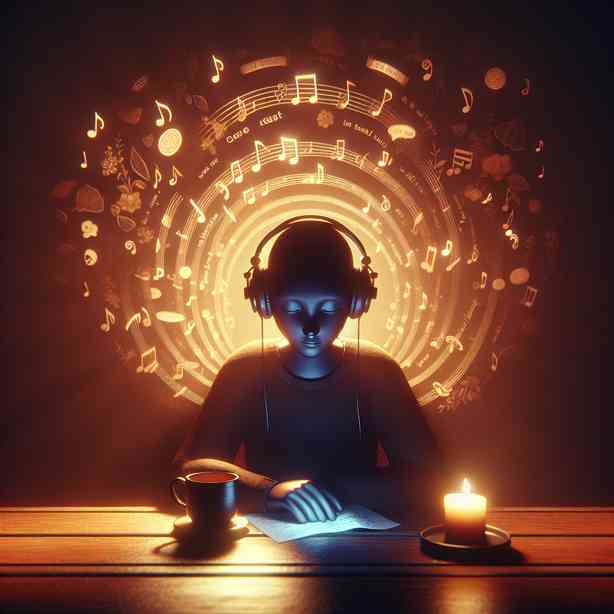
Sad music often evokes a sense of safety and comfort for many people, and understanding why this phenomenon occurs taps into the intricate relationship between emotions, music, and psychology. When we listen to sad music, we might find ourselves immersed in feelings of melancholy, nostalgia, or introspection. Yet, paradoxically, this experience can feel therapeutic and safe rather than distressing. This exploration delves into the reasons behind this emotional response, uncovering the layers of our psychological makeup that draw us to the poignancy of sad melodies.
One significant aspect of why sad music feels comforting is the idea of emotional validation. When we listen to sad songs, we often find that the lyrics and melodies resonate with our personal experiences. This connection can create a sense of belonging, as we recognize that others share similar emotions and struggles. In a world where vulnerability is sometimes seen as a weakness, sad music provides a space to acknowledge and process our emotions without fear of judgment. Through this recognition, we can find solace in knowing that we are not alone in our sorrow.
Furthermore, sad music often allows for a cathartic release of pent-up emotions. Many individuals struggle to express their feelings in their daily lives, especially if those feelings are complex or difficult to articulate. When we listen to a sad song, we create an environment where it’s safe to confront these emotions. The music acts as a catalyst for introspection, giving us permission to feel and reflect. This process can be incredibly liberating, facilitating an emotional release that can be both healing and revitalizing. It transforms our isolation into a shared experience, fostering a connection to the artist and, by extension, to others who may be feeling the same way.
Moreover, the structure of sad music itself reinforces this emotional safety. Minor keys, slower tempos, and haunting melodies evoke feelings of sadness and introspection, often leading to an immersive listening experience. The intricacies of the composition encourage listeners to engage with the music on a deeper level. This depth can create a space where we feel secure enough to explore our feelings. The rich emotional landscapes crafted by musicians invite us to wander through our thoughts, mirroring the complexity of our inner lives. In this way, sad music becomes not only a reflection of our emotions but also a safe haven where we can confront and understand our emotional states.
Interestingly, research suggests that listening to sad music may even elevate our mood despite the sadness conveyed in the lyrics and melody. This phenomenon, known as the “paradox of pleasure,” occurs because engaging with sad music can stimulate the release of neurotransmitters that enhance our mood, such as dopamine. This emotional rollercoaster can leave listeners feeling uplifted and content after a cathartic experience, reinforcing the notion that sad music can be a source of comfort rather than despair. By experiencing and processing sadness through music, we paradoxically increase our overall emotional well-being.
Another important aspect to consider is the role of nostalgia when engaging with sad music. Many songs evoke memories of past experiences, relationships, or significant life events associated with feelings of longing or loss. This nostalgia, while rooted in sadness, can provide a comforting connection to our past, allowing us to reminisce about both the highs and the lows of life. It’s as if the music serves as a gentle reminder of our journey, helping us to process not only our current feelings but also the experiences that have shaped us. By embracing these memories through the medium of music, we can find a sense of closure, resolution, or understanding, ultimately reinforcing our emotional safety.
Additionally, sad music can encourage introspection and self-discovery. The contemplative nature of the genre often prompts listeners to reflect on their lives, relationships, and choices. This process of self-examination can lead to personal growth, as we confront our feelings and consider how they influence our actions and decisions. Engaging with sad music invites us to explore our inner thoughts and feelings, fostering a sense of safety in our quest for meaning and understanding. This journey into the self can be both enlightening and transformative, empowering us to navigate life’s challenges with greater resilience.
Beyond the personal aspects, cultural factors also play a role in why sad music feels safe. Art has often served as a reflection of societal struggles, and sad music is no exception. For many listeners, engaging with sad songs can feel like a form of collective mourning or solidarity, uniting people across different backgrounds in shared emotional experiences. This cultural connection can enhance our sense of safety, reinforcing the idea that our struggles are part of the human experience. By embracing the sadness present in music, we contribute to a larger narrative that acknowledges our collective vulnerabilities and, in turn, cultivates empathy among listeners.
In conclusion, the allure of sad music extends far beyond mere emotional expression. It encompasses a complex interplay of validation, emotional release, nostalgia, and cultural connection that fosters a profound sense of safety for listeners. In the catharsis of sadness, we find understanding, companionship, and ultimately, healing. Music has the remarkable power to engage us in ways that transcend words, allowing us to navigate our emotional landscapes with grace and compassion. So the next time you find yourself drawn to the melancholic strains of a sad song, remember that within those notes lies a safe haven—a space to feel, reflect, and ultimately thrive amidst the complexities of life.


